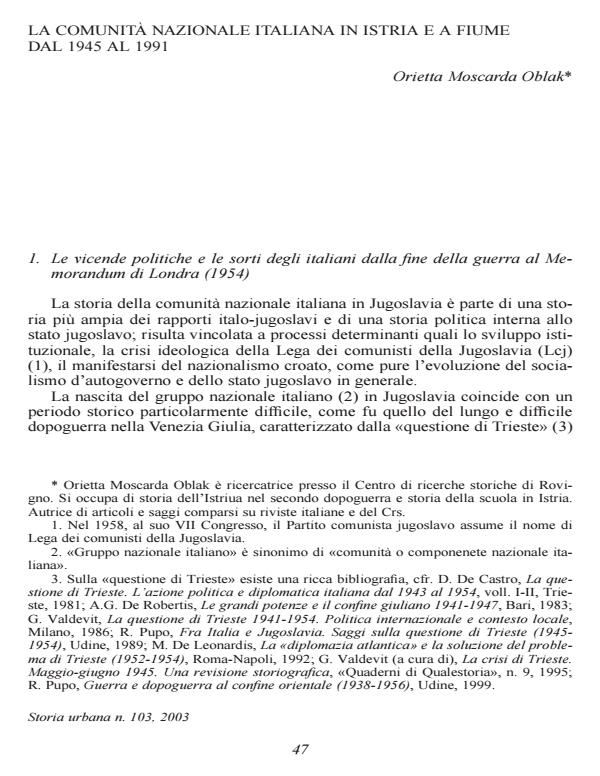La comunità nazionale italiana in Istria e a Fiume dal 1945 al 1991
Journal title STORIA URBANA
Author/s Orietta Moscarda Oblak
Publishing Year 2004 Issue 2003/103
Language Italian Pages 19 P. File size 77 KB
DOI
DOI is like a bar code for intellectual property: to have more infomation
click here
Below, you can see the article first page
If you want to buy this article in PDF format, you can do it, following the instructions to buy download credits

FrancoAngeli is member of Publishers International Linking Association, Inc (PILA), a not-for-profit association which run the CrossRef service enabling links to and from online scholarly content.
The author outlines the history of the Italian community in Istria and Fiume, which turned into an ethno-national minority after the drawing of new borders and the national and social changes produced by the 1947 Peace Treaty and the 1954 Memorandum of Understanding. The timespan covered corresponds to the particularly critical and prolonged after-war period in Venezia Giulia, marked by the Trieste issue and more specifically by the exodus of the Italian-speaking population of Istra and the Quarnero. This period is described in the light of the internal political evolution of Yugoslavia and the Italo-Yugoslav relations. In the immediate aftermath of the war, a process of progressive demographic decline as well as political and cultural downsizing of the Italian community took place, leading to an ethnic and cultural deficiency that has never been redressed. Despite the very advanced formal legal protection enjoyed by the Italian community in communist Yugoslavia, the regime in power thoroughly emptied the law of its effectiveness. An assimilation policy and nationalistic measures further contributed to the numerical reduction of the Italian community living in Istria and Fiume.
Orietta Moscarda Oblak, La comunità nazionale italiana in Istria e a Fiume dal 1945 al 1991 in "STORIA URBANA " 103/2003, pp , DOI: